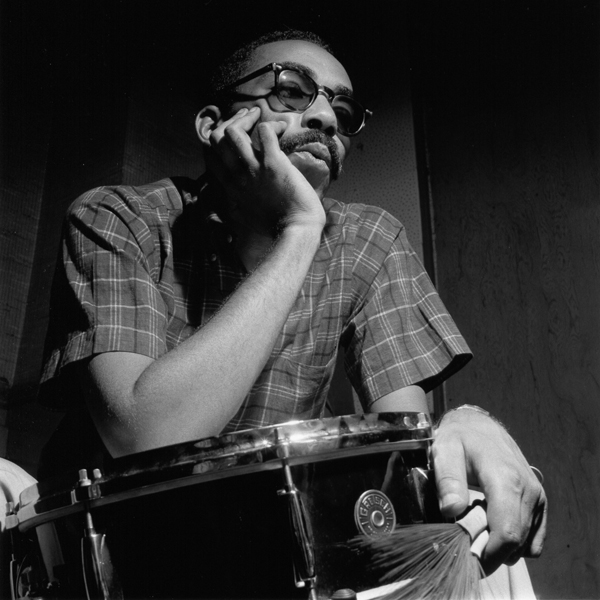Dive into the Power & Passion of ‘Tenor Madness
In the vast panorama of jazz, Sonny Rollins’ “Tenor…
Red Garland, a titan in the realm of jazz, would have turned 100 tomorrow. In the spirit of celebration, we cast our gaze upon his 1957 album, ‘Groovy’. A title befitting the vibes it exudes, this collection offers a vibrant blend of Red’s masterful playing, caressed by the rhythm section’s dynamic pulse.

Recorded in the chill of December 1956 and the bloom of May and August 1957, ‘Groovy’ materialized under the Prestige label. The hallowed halls of the Van Gelder Studio in Hackensack, New Jersey, bore witness to its creation. The studio’s walls still echo with the timeless notes played on those days.
Red Garland, the principal player, hails from the city of Dallas. Before finding his rhythm on ‘Groovy’, he shared his genius with the Miles Davis Quintet. His piano playing, a smooth blend of bop and blues, adds a soulful resonance to the jazz landscape. For Garland, ‘Groovy’ was not just another album; it marked his evolution as an artist.

The resonant notes of Paul Chambers‘ bass augment Red’s vibrant tones. Chambers, a Detroit native, was a vital part of the Miles Davis Quintet before joining Garland on ‘Groovy’. His playing, a deft blend of technical skill and innate musicality, contributes to the album’s enduring charm.

Art Taylor, the heartbeat of the trio, was a notable figure in the hard bop scene. Before ‘Groovy’, he had lent his percussive prowess to numerous ensembles. His sharp, dynamic drumming adds a layer of complexity to the harmonic landscape of the album.

“C-Jam Blues”, the album’s opener, sets the mood. Garland’s piano, alive with swing and blues, converses with Chambers’ bass and Taylor’s drums. Their interplay, a dance of notes and rhythms, captures the spirit of the blues in a jazz idiom.
“Gone Again” tells a tale of melancholy. Garland’s piano weeps, its notes cascading like teardrops. Chambers’ bass murmurs consolations while Taylor’s drums maintain a quiet vigil. The result is a poignant piece, vibrating with shared sorrow.
“Will You Still Be Mine?” brings a playful twist. Garland’s piano flirts with the melody, teasing out its nuances. Chambers’ bass and Taylor’s drums join in, their notes bouncing in a joyful dance. The track is a jubilant celebration, a musical laughter echoing through time.
“Willow Weep for Me”, my favorite track on the album, is a tender ballad. Garland’s piano whispers sweet nothings to the melody, each note a gentle caress. Chambers and Taylor join in, their playing adding depth to the track’s emotional resonance.

‘Groovy’ is a sonic journey, navigating through diverse musical terrains. From the bluesy swing of “C-Jam Blues” to the tender whispers of “Willow Weep for Me”, the album explores a broad spectrum of emotions. The trio’s playing, a seamless blend of individual styles, elevates each track into an aural masterpiece.
When ‘Groovy’ hit the scene in 1957, it made waves. Garland’s unique piano style, complemented by Chambers’ bass and Taylor’s drums, redefined the jazz trio format. The album’s vibrant blend of bop and blues, imbued with a soulful depth, left a lasting impact on the jazz landscape.
Today, ‘Groovy’ stands as a testament to Garland’s genius. Its influence can be traced in the playing of many contemporary jazz pianists. The album’s timeless appeal stems from its authentic expression of the human condition. Each track, a musical narrative, speaks of universal emotions. From joy and sorrow to longing and celebration, ‘Groovy’ offers a musical mirror to our shared experiences.
Contemporary musicians owe a profound debt to this classic album. Its essence has seeped into their veins, influencing their playing and shaping their musical identities. Artists like Benny Green and Brad Mehldau have spoken of Garland’s influence, his music serving as a guiding light in their creative journeys.
Now, as we stand at the threshold of Red Garland’s centennial, ‘Groovy’ takes on a deeper significance. It is not just an album, but a legacy – a celebration of a musician whose genius transformed the landscape of jazz. It is a testament to the enduring power of music, its ability to touch hearts and transcend boundaries.
So, as we spin ‘Groovy’ on Red’s hundredth, we do more than just listen. We remember a maestro who spoke through his piano, his notes becoming our shared language. We celebrate his life, his music, and the timeless gift he left us. Happy birthday, Red Garland. Your music, forever groovy, continues to inspire us.